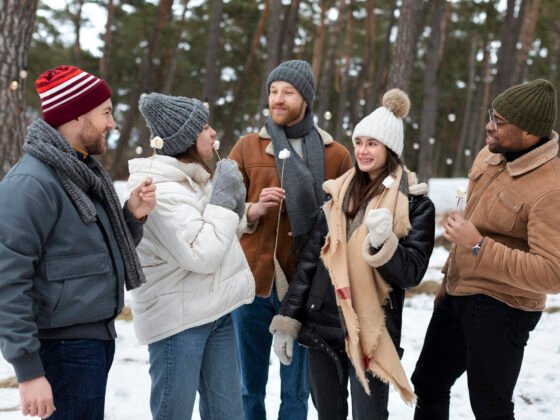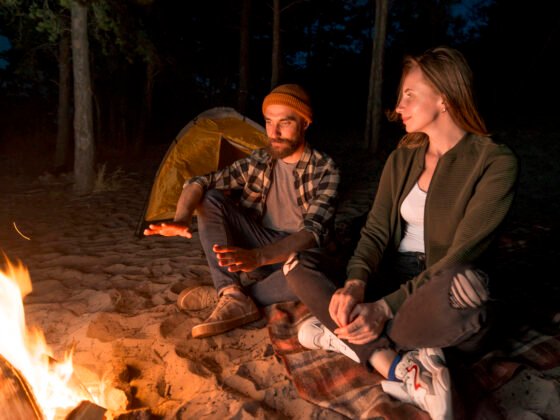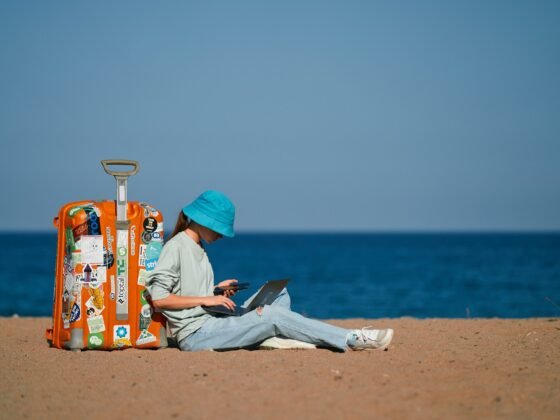A dog-friendly vacation for you and your best travel buddy will surely make a memory you will never forget. Whether you’ve opted to hike mountains, hang out at the beach, or visit another city, the list is long of places you can take your dog. How to take your dog on vacation involves preparing them for the journey. This involves packing the essentials, and ensuring the accommodations they will need are in place at your destination.
It’s also important to consider your dog’s specific breed needs when planning a trip. For example, larger or long-haired breeds like the Mini Bernese Mountain Dog can be more sensitive to heat, so destinations with cooler climates or shaded walking trails are ideal. Brachycephalic (flat-faced) breeds may struggle with air travel or high activity levels, while high-energy working breeds might need extra exercise. Tailoring your itinerary to suit your dog’s comfort and health can make the holiday more enjoyable for both of you.
Here is how to make the journey with your dog fun, exciting, and comfortable for you and your pup.
Have Copies of His Records
Have your dog’s vaccination records ready to show a border agent if you’re crossing a border.
Keep Your Dog Hydrated
Set a timer on your smartphone to take breaks while travelling to give your dog water. They must stay hydrated, especially in the hot summer sun. Don’t let your dog drink stagnant water-take your own.
Pack Your Dog’s Favorite Food
Giving your dog treats while on vacation can be tempting, especially in transit. However, they should pack their best dog food instead. This will ensure they get all the nutrients, vitamins, and minerals they need to feel their best.
Be Mindful of Others
Just like at home, be mindful of others. Avoid letting your dog off-leash anywhere he could agitate locals, wildlife, or plants in the area.
Travel with Them A Bit Before
If your dog is not used to travelling, make short trips with them before your vacation. Take them to your vehicle and give them the chance to get used to traveling. This will help calm any nerves they may have.
Bring a Pet First Aid Kit
Your dog may get injured while out and about. When you’re far from your vet, a First Aid kit may be all you have to tend to a minor injury. Be sure to pack a Pet First Aid Kit among your belongings.
Make sure you have the right cleaning supplies. Your dog might have an accident. Be ready. Have cleaning products ready and packed.
Pack Some Dog Toys
When you need a minute to think, pack some dog toys for your puppy to entertain itself with while you take a break, relax, and de-stress while on vacation.
Have a Reliable Leash and Collar
Ensure your dog is on a high-quality leash and has a collar with his ID on it. A vacation to a new place may make your dog more excited to explore, which could lead to calm issues. A reliable leash is necessary.
Invest in Flea and Tick Prevention
Ticks are everywhere. If your vacation is outdoors, ensure your dog has flea and tick protection.
Buy Booties to Protect Dog Paws
Ensure your pooch’s paws are protected with booties for a hike or extended walk. As silly as they look, they may save a ton of pain for your dog as they can more easily navigate rough terrain, walk on hot pavement, and walk over sharp rocks.
Look for Dog-Friendly Accommodations
If you are still looking for a dog-friendly hotel where you are staying, search for bed & breakfasts or Airbnb residences that are dog-friendly. The last thing you want to do is sneak your dog into an establishment that may not let you sign in if they discover you’ve brought your pup.
Survey the Room When You Arrive
When you arrive, look around your accommodation. Remove any poisonous plants. Put away anything chewable, such as shoes.
Bring Their Favorite Blanket
If your dog likes blankets, bring it. This will provide a familiar texture, visual, and smell for your dog to connect with in an unfamiliar place.
If You’re In A Car, Prepare the Vehicle
If you’re travelling by car, ensure it has enough space for your dog. Make sure you have dog food and water available. Lay out his blankets or a bed where he’ll ride. Ensure he is kept in that area for the duration of the trip.
Rest Stops Are Important for Road Trips
Stop and take a break every 3-4 hours when travelling in a vehicle. Let your dog stretch their legs and go potty. You also want to take out his bowl and ensure he gets a lot of water.
Rinse Your Dog Off After Swimming
Has your pet jumped into the water somewhere it doesn’t normally swim in? Rinse it off afterwards. Saltwater minerals, salt, chlorine, algae, and pollution can irritate its fur and skin. Also, dry its ears completely to prevent infection.
Photo by Emerson Peters on Unsplash












